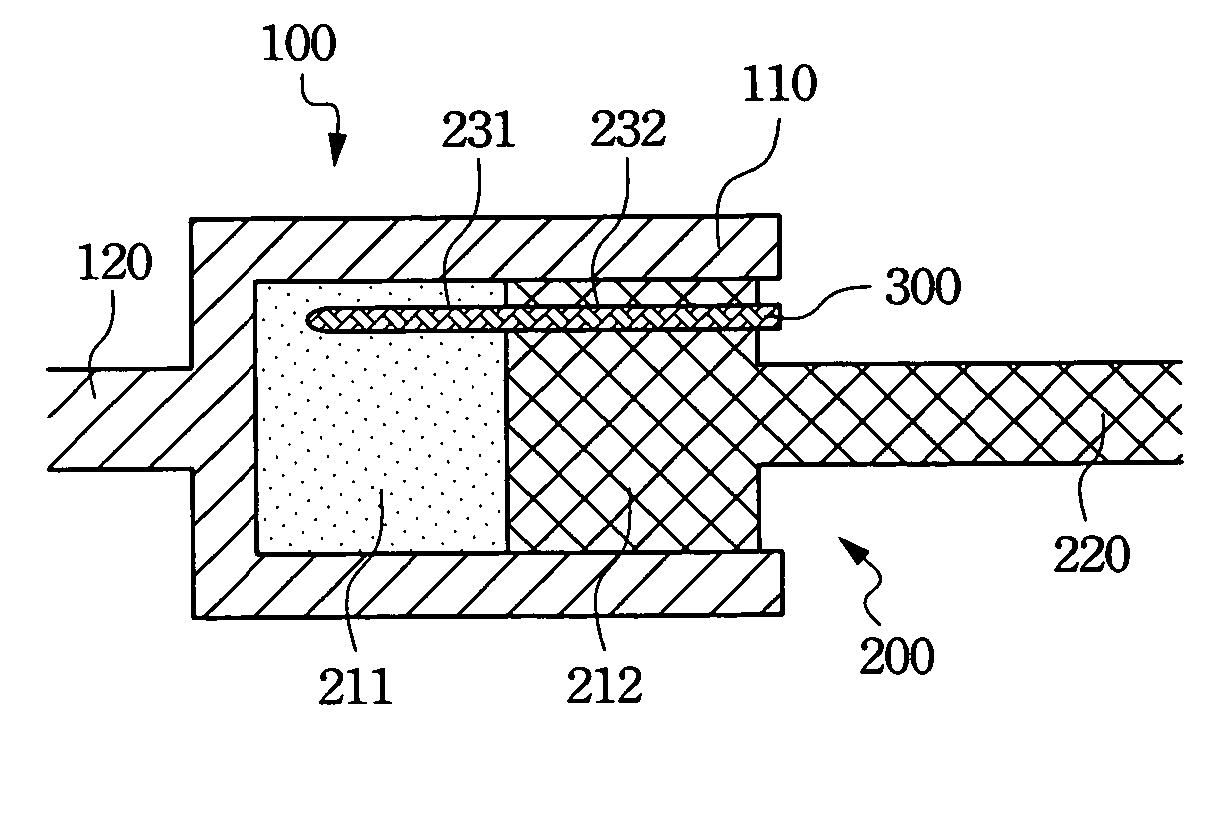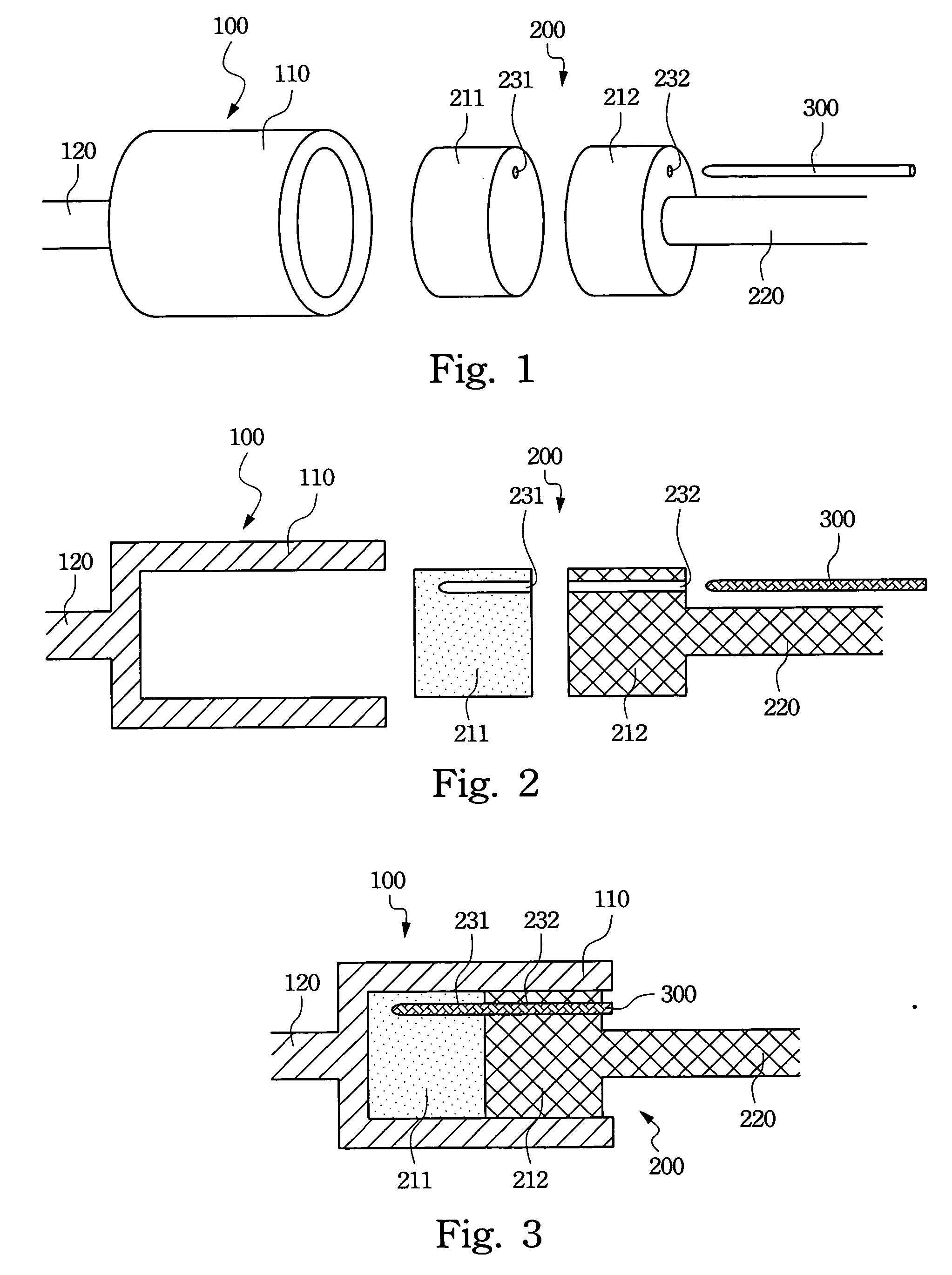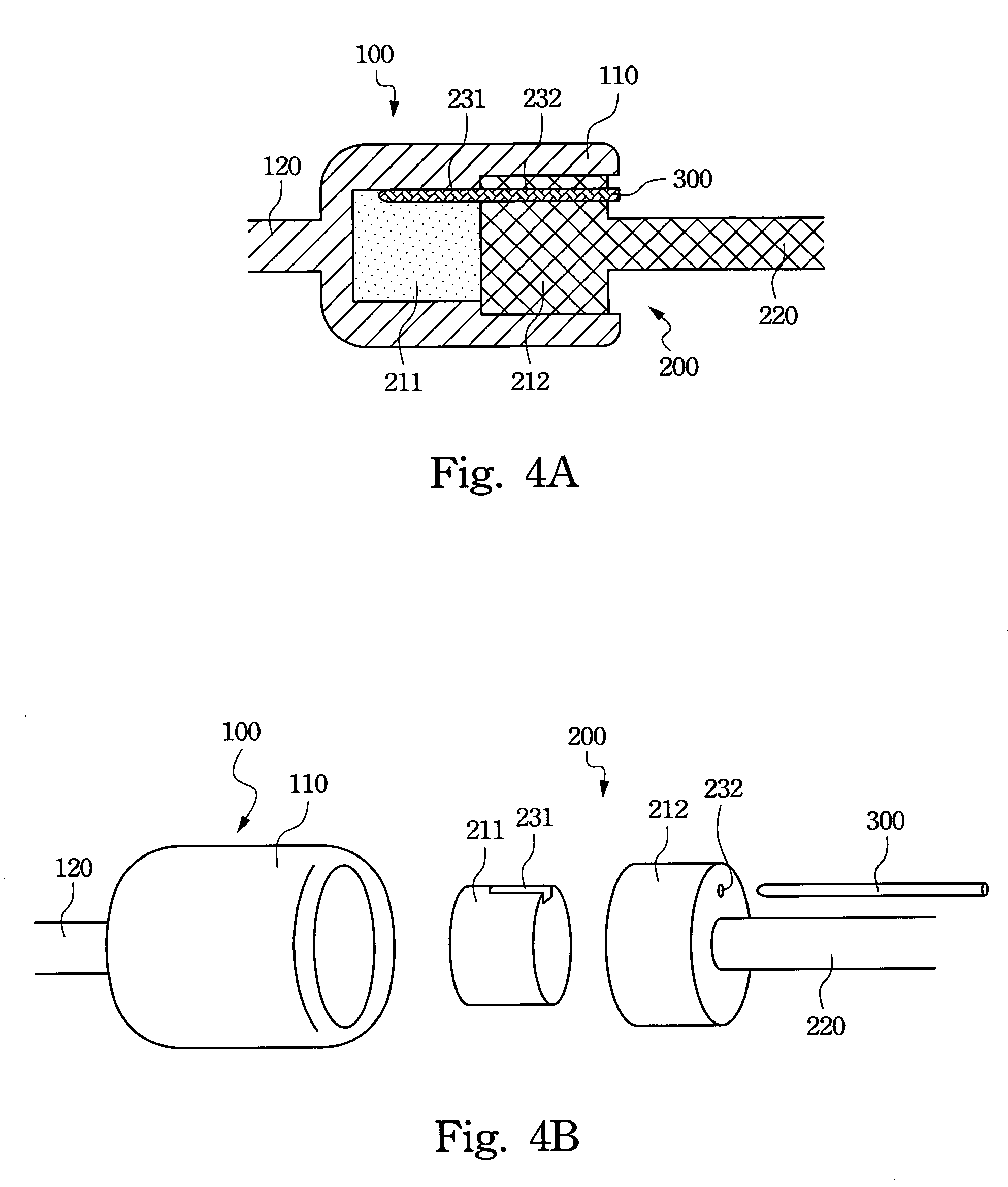Torque changeable pivot
- Summary
- Abstract
- Description
- Claims
- Application Information
AI Technical Summary
Benefits of technology
Problems solved by technology
Method used
Image
Examples
Embodiment Construction
[0023] The present invention will be apparent from the following detailed description, which proceeds with reference to the accompanying drawings, wherein the same references relate to the same elements.
[0024] As shown in FIGS. 1, 2, and 3, the disclosed torque changeable pivot includes a cylinder 100, a spindle 200, and a pin 300. The cylinder 100 and the spindle 200 are coupled together using the same axis of the pivot.
[0025] The cylinder 100 includes a cylinder shell 110 and a rotational axis 120. The cylinder shell 110 is an axially symmetric cylinder. The bottom of the cylinder shell is perpendicular to the axis of the pivot in a preferred embodiment of the invention. The rotational axis 120 is coupled to the bottom of the cylindrical structure of the cylinder shell 110, extending outward from the pivot. As the rotational axis 120 rotates, the cylinder shell 110 rotates along the rotational axis 120. For different pivots, the invention can eccentrically couple the rotational ...
PUM
 Login to View More
Login to View More Abstract
Description
Claims
Application Information
 Login to View More
Login to View More - R&D
- Intellectual Property
- Life Sciences
- Materials
- Tech Scout
- Unparalleled Data Quality
- Higher Quality Content
- 60% Fewer Hallucinations
Browse by: Latest US Patents, China's latest patents, Technical Efficacy Thesaurus, Application Domain, Technology Topic, Popular Technical Reports.
© 2025 PatSnap. All rights reserved.Legal|Privacy policy|Modern Slavery Act Transparency Statement|Sitemap|About US| Contact US: help@patsnap.com



